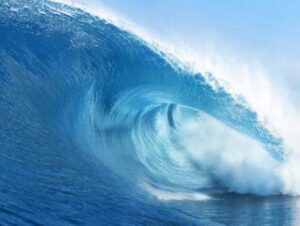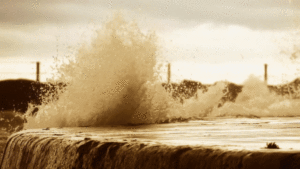Hare Mai, Kia ora
Welcome to the NZ Ocean Energy Association, the Aotearoa Wave and Tidal Energy Association (AWATEA).
AWATEA is currently restructuring and we will be back later this year. The legacy information will be revised as part of that restructure.
Many thanks for your interest.

Did you know …
… that Aotearoa New Zealand and Australia together have the biggest exclusive economic (200 nautical mile) zone on the planet?
… that Aotearoa has over 15,000km of coastline? This makes it the fourth longest coastline per capita with 1.5km per capita (Australia, the largest, has 3.4km per capita)
… that Aotearoa could generate over five (5) Giga Watt of energy from the ocean every year? And that this is about the total energy NZ consumes per year at present (43,500 GWh)? This means wave and tidal energy alone could power all private homes and industrial production of New Zealand. No other energy form at present could achieve this.
… that Aoteroa is a nation of navigators, starting with Kupe more than 800 years ago and other heros, like Sir Peter Blake and now Peter Burling & Blair Tuke leading the world of sailing? Polynesian Navigation to this day, is technology independent and still works with no power.
… that tidal energy has 95% reliability, wave energy over 80% vs solar’s 35% and wind in NZ of about 40% (dependent on the location & conditions)? The intermittency of solar and wind requires substantial storage investment to make these energy forms to work well. Wave and tidal energy can be a so called base load.
… that today despite a higher Levelized Cost of Energy (LCOE) wave energy can be cheaper than solar or wind energy to replace diesel generators for remote maraes, communities or islands? This considers the cost of generation, storage and predicatablity.
If you didn’t know, please read on.
Solar and wind are useful sources of renewable energy but are mostly land based and intermittent. In New Zealand solar has a reliability of about 36% and onshore wind a reliability of 32%.
In contrast, wave energy has over 85% reliability and tidal energy over 95%. Both ocean energy sources can be used as a base load that increases the reliability of power supply to 24 hours x 7 days. In remote coastal areas or islands wave energy is already cheaper than diesel, solar and wind (CSIRO, 2022).
The Islands of Aotearoa together with Australia have by far the biggest exclusive economic zone (EEZ) on the planet. This is about 1% of the earth’s surface or one rugby field for every second Mainland Chinese.
This means that the future energy which could be produced by ocean energy in Aotearoa exceeds the current household and industrial energy demand in New Zealand (43,500 GWh, MBIE 2024).
New Zealand is a global leader in renewable electricity with over 85% of its electricity coming from renewable energy. We understand hydro, geothermal, onshore wind and lately solar power. As a nation of navigators, we know how to work efficiently in harsh offshore ocean environments and we understand the supply chain required for ocean energy.
These are only some of the reasons why ocean innovation and ocean energy should be featured prominently in any of New Zealand’s future energy plans. What do YOU think …
AWATEA supports the UN 2030 Sustainabile Development Goals

If you are interesed in ocean energy and ocean based innovation, please subscribe to our bi-monthy newsletter
